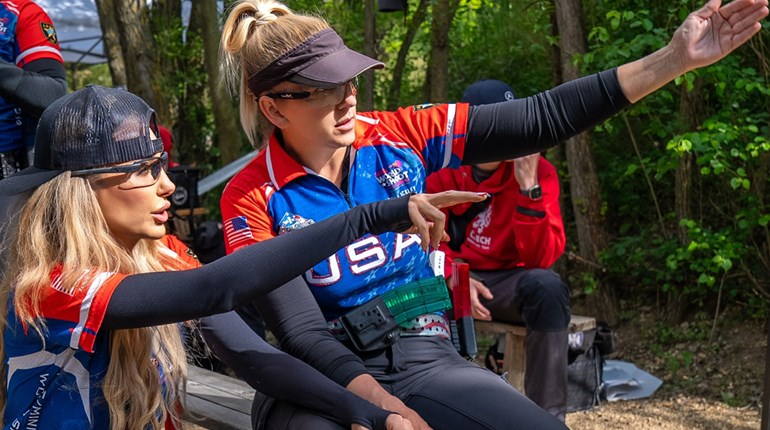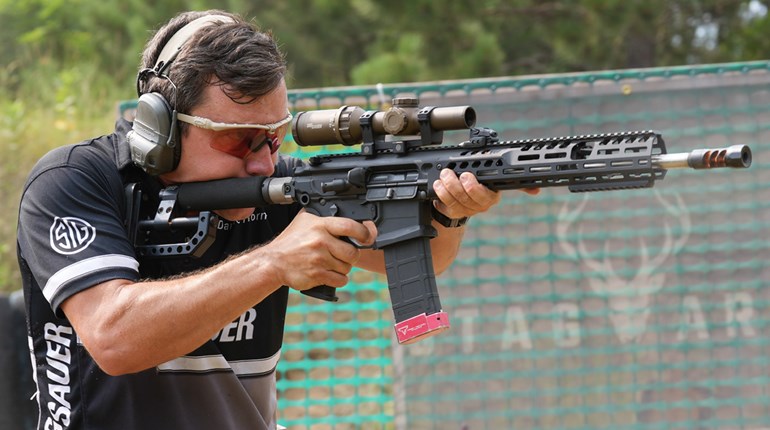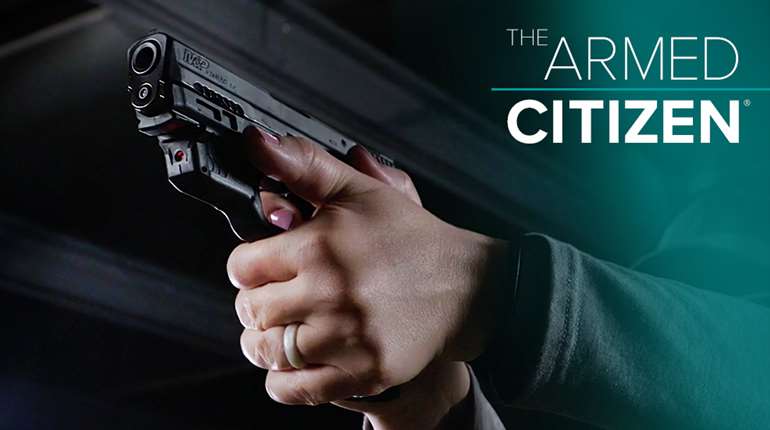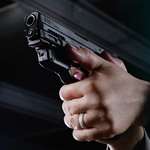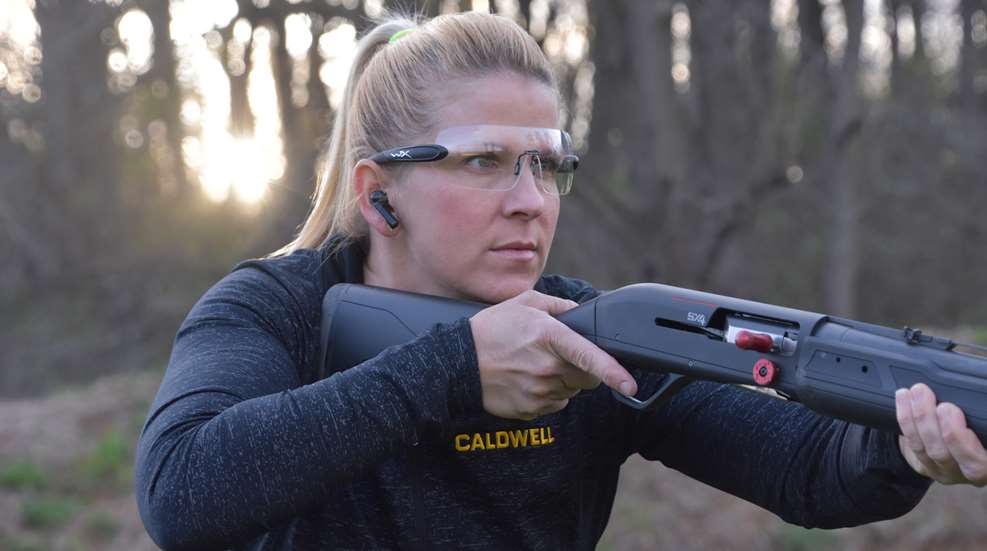
Human beings have two eyes, and there are no replacements if we damage them. While I never want to sound like the mother in A Christmas Story, there actually is a reason why common sayings like, “You’ll shoot your eye out!” exist—for people who don’t use eye protection!
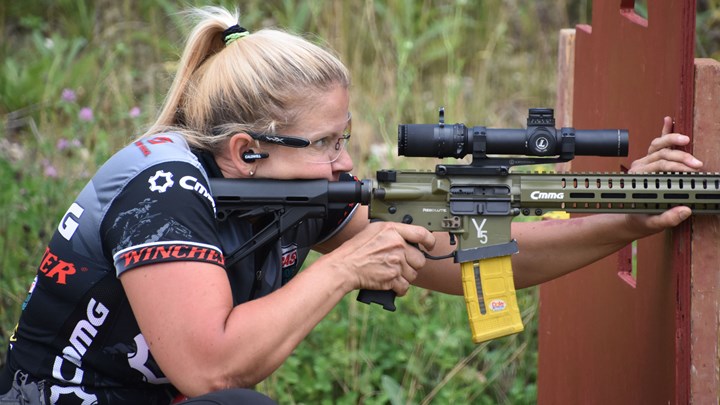
1. Your projectiles or bullets break apart as they impact a target.
When shooting a firearm, there is a small, controlled explosion that happens inside the gun to eject the projectile that hits a target downrange. This impact downrange is one of the reasons you need to wear eye protection.
Dirt, rocks and debris are often sent flying when a bullet or parts of a bullet impact the berm. When a soft metal, like lead, impacts a harder metal, like steel, it breaks apart. Properly rated eye protection can deflect bullet, projectile and jacket fragments that fly into the air.
Even if the projectile is just impacting dirt, rather than steel, bits of the bullet can break off and be deflected in unpredictable ways. That’s why you shouldn’t climb on berms or let children play on them. It’s also why standing off to the side of where targets are placed is a bad idea. Fragments from projectiles are sent outward, and you don’t want to be hit by them.
2. Byproducts are expelled from the gun.
When you shoot a firearm, the hammer strikes the primer to ignite the gunpowder. The flame goes through the flash-hole in the brass case to light the powder. The gunpowder burns until enough pressure builds to expel the bullet or projectile down the barrel. Sometimes, that gas can come back toward you, especially if you are shooting a firearm like a rifle with a muzzle brake or a suppressed firearm. Sometimes other elements are extruded like bits of unburnt powder, carbon, gun oil or other natural byproducts of operating what is essentially a machine. You don’t want gas, oil or anything else in your eyes.
Another notable eye-hazard ejected from a gun is the brass. Brass is usually burning hot and comes out forcefully. It’s not just the person shooting the firearm who should be wearing eye protection; even if you are just watching others, it’s essential to protect your eyes. I have a scar on my forehead from brass ejected from an FAL that my son was troubleshooting for issues. It was over gassed, and the brass flew further than I’d anticipated. Happily, I was wearing eye pro or things could’ve been worse.
3. Airborne debris is sometimes created by your bullet impacting the backstop.
Knowing your target and beyond is one of the four rules of firearms safety. But often people might not think about the potential for their backstop or items downrange to impact them. If you are shooting into dirt berms, railroad ties, rubber-faced backstops and other backdrops that would serve to “catch” the bullet, your risk of flying debris is lower than if you are shooting into hillsides, rock or gravel berms, or any backstop that can unpredictably break apart the bullet. Commercial ranges are usually a safer choice for this reason—they’ve had an engineer and safety inspection. Public land and places people shoot without any oversight can be fun, low-cost and allow easy access, but make sure you’re paying attention to your surroundings before you start shooting. A good rule of thumb is to never be closer than 10 feet from your target unless you’re specifically training on close targets on a range designed for such use.
Debris and fragments from other people on the same range as you are also a danger. This is part of why it’s important to not only wear eye protection when you are actively shooting, but whenever you are at a range that’s open and running. The risk of airborne debris is always there even if they are at another bay or berm. This is true at indoor ranges as well. If someone else's projectile impacts outside the backstop (maybe a ceiling, wall or floor), debris can be sent flying—and you don’t want that getting to your eyes!
Convinced you want to keep your eyes safe and protected?
Always look with a careful eye at public ranges that do not have staff on sight. Make sure nobody has put anything downrange that can be a safety hazard. While it might sound fun to shoot up old items like we see in the movies, it’s not a good plan, as fragmented bullets can be sent haywire, and you don’t want to have anything come back toward you. Remember, children on the range need eye protection, even if they are not shooting.












